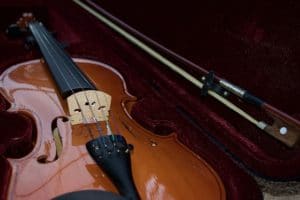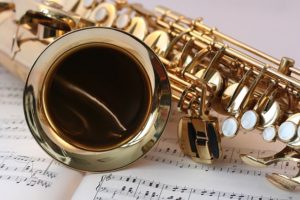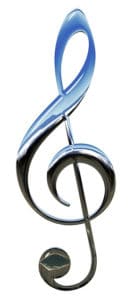If you take care of your valuable instrument, it will give you many years of trouble-free enjoyment. Here are some instrument care tips from Varno Musical Instrument Repair for keeping your instrument in great shape: cleaning, polishing, storing your instrument, and more.
General Care
Storing Your Instrument
If the instrument is not in use, keep it closed in its case to protect it from damage and to keep the finish intact, especially in geographic areas affected by salt or sulfur content. Do not store music or anything else in the case unless there is a separate compartment specifically designed for these accessories as there is a risk of bending the delicate keys or valves when the case is being closed. Never leave your instrument out of its case when not being played or to exposure to any source of heat; ie: sunlight, attics, hot cars, radiators, windows or anywhere direct sunlight can cause extreme heat or UV damage.
Remove Fingerprints
Lacquered (brass) instruments require use of a soft cotton cloth to wipe away fingerprints and dirt from the body of the instrument. Always remember to spray the cloth, do not spray cleaners directly on the instrument. For most lacquered brass instruments Windex serves as an excellent cleaner. Silver plated instruments may also be wiped down as described above. Silver polish cloths can be used sparingly but are still abrasive. Do not use Brasso or Silver polish as these are very abrasive and will scratch silver and deteriorate/wear silver and gold plating off the instrument prematurely. It is recommended that you wipe off all fingerprints and perspiration each time you finish playing the instrumetn. Cleanliness is the key to keeping the finish of your instrument intact and keeping it looking its best.
General Brass Instrument Care
Mouthpiece
Regularly clean your mouthpiece with dishwashing soap, warm water and a mouthpiece brush as dirt and deposits tend to collect there. Eating and drinking (especially sweet and sugary drinks) should be avoided immediately before playing as these particles and residue will collect inside the instrument. Accumulation of dirt and deposits in the mouthpiece back bore will affect the response and tone quality of the instrument. Never force the mouthpiece into the instrument - just a gentle twist is all that is required when inserting. If it does become jammed or stuck, don't try to remove it yourself. VMIR has a specialized tool that will remove it without damage.
Tuning Slides
Tuning slides need to be kept clean and lubricated. If they become difficult to move, remove them, clean them with a soft cloth and then apply new tuning slide grease sparingly. If they are stuck or will not move smoothly... call VMIR immediately.
Piston Valves
Piston/rotor valves are precision machined to very close tolerance. Any dirt or foreign body that finds its way between the valve and valve casing has the potential to make the valve action sluggish or can stop the valve function altogether. Lubrication of the valves is recommended before EVERY use.
General Woodwind Instrument Care
Assembly
Caution needs to be considered when assembling a woodwind instrument. The instrument needs to be held or gripped where there are few or no keys as these "bridge keys" are very delicate. Most woodwind instruments have these bridge or "correspondence" keys which link the instrument keying mechanisms and these can be easily bent while assembling. The same applies especially to the saxophone octave key that connects the main body with the neck section.
Cork Joints
Cork joints need a regular application of cork grease. Vaseline will work in a pinch however quality cork grease is recommended. A new cork joint will require greasing for the first few uses - thereafter at least twice a week or as needed or more if the joints seem tight or the instrument is difficult to assemble.
Drying
After every playing session the inside of the instrument needs to be dried and cleaned on the inside as well. This is accomplished by using a pull-through (a cloth attached to a small weight by a cord) often referred to as "a swab". The process of swabbing out the internal bore of the instrument will greatly extend the life of the pads, and keep wood instruments from developing body cracks. If your wood instrument develops a crack in the joint or bore this may entail an expensive repair. Prevent this by cleaning and oiling the bore of your wooden instrument.



